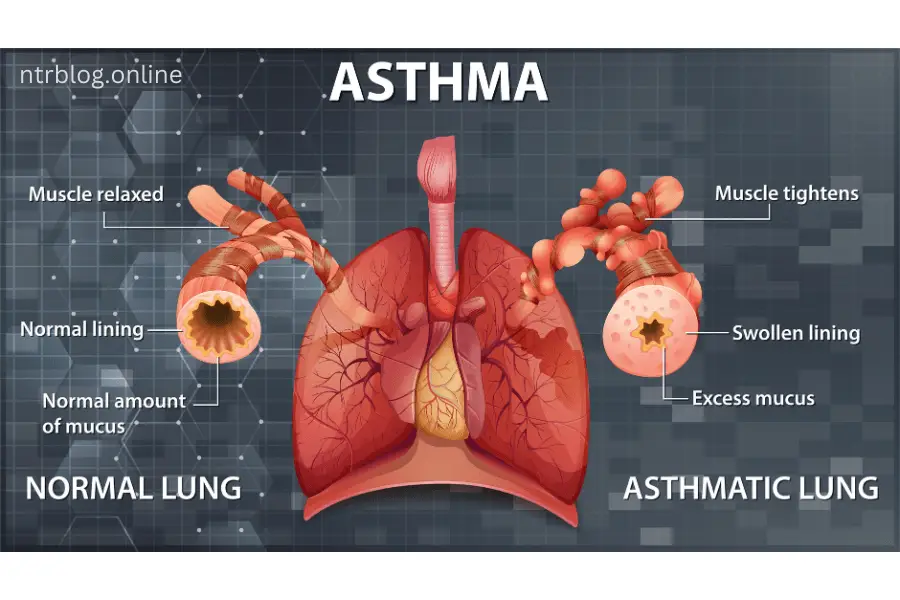Table of Contents
Understanding seasonal depression:
- Seasonal depression, also known as seasonal affective disorder (SAD), is a type of depression that arises with changing seasons, usually starting in late autumn. People affected by SAD may experience persistent sadness, low energy, loss of interest in activities they once enjoyed, excessive sleepiness and weight gain. Treatment options include light therapy, counseling and antidepressants.
What is seasonal affective disorder (SAD)?
- SAD is a seasonal pattern of depression that typically begins in the fall as daylight hours decrease, deteriorate during the winter and often improve with the arrival of spring and longer daylight hours. A milder form of SAD, often called “winter blues”, can also occur, where one feels a little depressed during colder, darker months. However, SAD is more intense and affects daily life, making it difficult to function normally. Luckily, effective treatments are available to help manage and alleviate symptoms.
Can seasonal affective disorder (SAD) occur in summer?
- Although less common, some individuals experience a form of SAD known as “summer depression”, which begins in late spring or early summer and usually ends in autumn. This variant is less prevalent than winter-associated SAD but is still an important condition for those affected.
How widespread is seasonal affective disorder (SAD)?
- In the United States, about 5% of adults are affected by SAD. Onset often occurs in young adulthood, usually between the ages of 18 and 30. Interestingly, SAD appears more frequently in female assigned individuals at birth than male assigned individuals at birth, although the reasons for this difference are unclear. Additionally, about 10% to 20% of Americans experience a milder form of winter blues, which can still affect well-being but is generally less severe than full-blown SAD.
Symptoms and causes of seasonal affective disorder (SAD):

Recognizing the symptoms of SAD:
- Seasonal affective disorder (SAD) is a form of depression officially classified by the American Psychiatric Association as a major depressive disorder with a seasonal pattern. If you have SAD, you may experience significant mood changes and depression symptoms during specific times of year. Common symptoms include:
- Feeling consistently sad or depressed most days.
- Anxiety.
- Carbohydrate cravings followed by weight gain.
- Extreme fatigue and lack of energy.
- Feeling hopeless or worthless.
- Difficulty concentrating.
- Irritability or excitement.
- Feeling heaviness in extremity.
- Loss of interest in activities you usually enjoy, including social withdrawal.
- Sleep disturbance, usually sleeping more.
- Thoughts of death or suicide.
For people with summer SAD, symptoms may vary and may include:
- Excitement and restlessness.
- Anxiety.
- Loss of appetite and weight loss.
- Violent behavior incidents.
- Sleep trouble (insomnia).
Understanding the causes of suffering:
- Exact cause of SAD unclear, but thought to be linked to reduced exposure to sunlight during certain seasons. Several theories suggest possible triggers:
1. Biological clock changes: Less sunlight can disrupt your internal biological clock, which regulates mood, sleep and hormones. This disruption can cause difficulties adjusting to seasonal changes in daylight.
2. Brain chemical imbalance: Neurotransmitters such as serotonin, which are important for mood regulation, may be in short supply in individuals with SAD। Sunlight helps maintain serotonin levels, so less sunlight can exacerbate serotonin deficiency, leading to depression.
3. Vitamin D deficiency: Sunlight is a major source of vitamin D, aiding serotonin production. Sunlight deficiency can lead to vitamin D deficiency, further affecting serotonin levels and mood.
4. Melatonin overproduction: Melatonin, a hormone that regulates sleep patterns, may be produced in excess in people with SAD due to reduced sunlight, causing lethargy and sleepiness during the winter months.
5. Negative thoughts: Individuals with SAD often experience stress, anxiety, and negative thoughts about winter. It’s unclear if these considerations are the cause or consequence of SAD.
Who is at risk of SAD?
- SAD is more common in individuals ages 18 to 30 and female individuals assigned at birth. Other risk factors include:
- Having other mood disorders like major depressive disorder or bipolar disorder.
- Having a family history of mental health conditions like SAD, other types of depression, or schizophrenia.
- Living in areas far from the equator, where daylight hours are significantly shorter in winter.
- Living in constantly cloudy areas with limited sunlight exposure.
Diagnosis and testing for seasonal affective disorder (SAD):
How is seasonal affective disorder (SAD) diagnosed?
- If you’re experiencing symptoms of SAD, it’s necessary to do a professional evaluation instead of trying to self-diagnose. Your healthcare provider will conduct a comprehensive assessment to rule out other potential causes of your depression, as SAD can often be part of a more complex mental health condition. You may be referred to a psychiatrist or psychologist who will discuss your symptoms and their patterns to determine if you have SAD or another mood disorder. They might even ask you to complete a questionnaire to help diagnose SAD.
What tests are needed to diagnose SAD?
- Currently, there are no specific blood tests or scans to diagnose SAD। However, your healthcare provider may recommend some tests to exclude other conditions presenting similar symptoms. For example, they can check your thyroid function to make sure it’s not contributing to your symptoms.
Criteria for diagnosing SAD:
To diagnose SAD, your healthcare provider will look for:
- Symptoms consistent with major depression.
- Depressive episodes that occur for at least two consecutive years during a specific season.
- Depressive episodes more often during a particular season than the rest of the year.
Management and treatment of seasonal affective disorder (SAD):
How is seasonal affective disorder (SAD) treated?
- Your healthcare provider will discuss different treatment options for managing SAD, often recommending a combination of approaches:
- Light therapy: Includes using a special lamp that mimics natural sunlight, which can help ease SAD symptoms.
- Cognitive Behavioral Therapy (CBT): CBT is a form of talk therapy that has proven highly effective for treating SAD, providing long-lasting benefits.
- Antidepressant medication: Medications to manage depression may be prescribed alone or with light therapy.
- Spending time outdoors: Increasing exposure to natural sunlight by spending more time outdoors during the day and increasing sunlight in your living or working spaces can improve symptoms.
- Vitamin D supplements : Taking vitamin D supplements may help, but it’s important to consult your provider before starting them.
How does light therapy work?
- Light therapy involves using a specially designed lamp with white fluorescent light tubes covered with plastic screens to block ultraviolet rays. Light intensity should be about 10,000 lux, significantly brighter than regular indoor lighting.
To use light therapy effectively:
- -Keep the lamp about two to three feet away while engaging in activities like reading, eating or working.
- Avoid looking directly into the light; indirect exposure is recommended.
- Use therapy for about 15 to 30 minutes in the morning to avoid insomnia.
How long will it take for light therapy to work?
- Typically, you can see improvement within two to four days of starting light therapy, with full benefits often seen after about two weeks. To maintain these benefits, it’s generally recommended to continue using light therapy throughout the winter months.
Is light therapy safe?
While light therapy is usually safe, some situations may require caution:
- Diabetes or retinopathy: Risk of retinal damage.
- Some drugs : Some antibiotics and anti-inflammatory increase sensitivity to sunlight, potentially causing harm.
- Bipolar disorder: Light therapy and antidepressants can trigger hypomania or mania.
Possible side effects of light therapy
Some side effects may include:
– Eye strain
– Fatigue
– Headache
– Insomnia
– Irritability
Can I use a tanning bed as an alternative to light therapy?
- No, tanning beds shouldn’t be used to treat SAD Although they emit light, they also produce high levels of ultraviolet (UV) rays that can damage your skin and eyes.
What types of antidepressants can help with SAD?
- Selective serotonin reuptake inhibitors (SSRIs) are commonly prescribed to treat SAD because they help regulate serotonin levels in the body, improving mood. Some SSRIs include:
- Fluoxetine (prozac®)
- Escitalopram (Lexapro®)
- Paroxetine (Paxil®, pexev®)
- Sertraline (Zoloft®)
- citalopram (selex®)
- Additionally, bupropion, available as an extended-release tablet, can be taken daily from fall to early spring to prevent episodes of seasonal depression.
Prevention:
Can I Prevent Seasonal Affective Disorder (SAD)?
- While you might not be able to prevent the first episode of SAD, once diagnosed, you can take steps to manage or even prevent future episodes:
- Use Your Light box: Begin light therapy in early fall before SAD symptoms appear.
- Spend Time Outdoors: Get outside daily, even on cloudy days, as daylight can improve your mood.
- Eat Nutritious Meals: Opt for healthy foods rich in vitamins and minerals instead of starchy and sweet cravings.
- Exercise Regularly: Aim for at least 30 minutes of exercise three times a week to reduce stress and anxiety.
- Stay Social: Maintain your social activities and connections for support during winter.
- Seek Professional Help: Consider seeing a mental health professional trained in Cognitive Behavioral Therapy (CBT), which is effective for SAD.
- Consider Medications: Discuss with your healthcare provider the possibility of taking antidepressants, especially if your symptoms are severe or persist despite other treatments. Starting medication before SAD symptoms begin can sometimes prevent episodes.
Outlook / Prognosis:
What are the prospects for People with Seasonal Affective Disorder (SAD)?
- The prognosis for people with SAD is generally positive. With the right diagnosis and a combination of treatments, many individuals find significant relief from their symptoms. It’s crucial to work closely with your healthcare provider to identify the best treatment plan for you.
Can Seasonal Affective Disorder (SAD) Come Back?
- Yes, SAD can recur annually in those prone to it. However, by taking preventive measures and starting treatment early, you can significantly reduce or manage the symptoms effectively.
Living With Seasonal Affective Disorder (SAD):
How Can I Best Take Care of Myself if I Have Seasonal Affective Disorder?
Do:
- Stick to Your Treatment Plan: Use medications or light therapy as directed and follow up with your healthcare provider if your symptoms don’t improve.
- Care for Yourself: Maintain a healthy diet, get sufficient sleep, exercise regularly, and manage stress. Talking to a therapist or counsellor maybe beneficial.
- Plan Ahead: Have a strategy for managing worsening symptoms. Schedule activities during months when symptoms typically worsen to stay engaged and avoid isolation.
- Start Treatment Early: Discuss preventive treatment with your healthcare provider. If your symptoms usually begin in October, consider starting treatment in September.
Don’t:
- Isolate Yourself: Even if you don’t feel like being social, try to stay connected with friends and loved ones to prevent your symptoms from worsening.
- Use Alcohol or Unprescribed Drugs: These can exacerbate symptoms and may negatively interact with antidepressants.

When Should I See a Doctor About Seasonal Affective Disorder?
- If you suspect you have symptoms of seasonal depression or another mood disorder, consult your healthcare provider. They will need to rule out other conditions or illnesses that might be causing your symptoms.
When Should I Go to the Emergency Room?
- Take immediate help, If you or someone you know has suicidal thoughts. Contact your provider, go to the emergency room, call 911, or reach out to the Suicide and Crisis Lifeline at 988. This service offers free, confidential support for those in crisis and is available 24/7.
What Should I Ask My Healthcare Provider?
- If you have SAD, consider asking your provider the following questions:
- What treatment is best for me?
- How can I prevent depressive episodes?
- Will light therapy work for me?
- Should I take an antidepressant?
- When should I start treatment?
- How long should my treatment continue?
- What dietary changes can help improve my symptoms?
- What other steps can I take to feel better?


